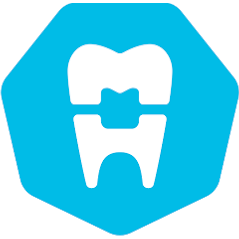Braces are a big deal! They are an investment in your child’s health, self-confidence, and smile. And they are definitely just that: an investment. Many parents have financial concerns about the cost of braces for their kids as well as other questions on how to guide their child in caring for their braces. In this post, we want to help you, as a modern-day parent, feel equipped with the information you need in order to guide your child through this process.
- Evaluate Early
Your child should see an orthodontist as early as seven years old. By seven, many adult teeth have already started to come in, and the orthodontist will be able to evaluate the teeth and jaw alignment to determine whether or not your child will need braces. If, based on this initial examination, your child will need braces, the orthodontist may recommend two-phase treatment.
Phase One treatment involves early intervention, typically directed at jaw or structure correction, to simplify and improve the effectiveness of getting braces later.
Phase Two (usually braces) takes advantage of the restructuring and spacing by completing the alignment process.
If your child doesn’t need early intervention, the orthodontist will be able to offer recommendations on when you need to come back in for reevaluation.
- Choosing the Right Braces
Which braces are right for your child? There are a few options to choose from, and your orthodontist will be able to recommend which option best suits your child’s needs. The average length of time that a child wears braces is two years, though, of course, the exact length varies significantly from person to person.
Traditional bracket and wire braces have a long-standing record of success. While advances have made current brackets lighter and more durable, the basic process remains much the same as it has been since the 1970s. Adjustment appointments every four to twelve weeks (depending on your specific needs) gradually shift the teeth into proper alignment. Traditional braces are typically the least expensive option.
Less visible braces come as either ceramic, tooth-colored brackets or a series of clear, custom-fitted retainers that gradually shift the teeth into alignment.
- Adjusting to Braces
Having braces is a big adjustment. Your child may experience discomfort for several days after the initial installation and for a day or two after each adjustment. Be sure to have soft food on hand for them to eat or snack on after adjustments!
- Caring for Braces
Taking good care of braces is an important challenge for your child. In addition to avoiding hard and sticky foods such as nuts, candy, caramel, and gum, your child’s teeth need to be brushed more frequently and thoroughly, since braces can trap food and bacteria close to the teeth, leading to accelerated decay. Packing a travel toothbrush and small toothpaste in their school lunch may help them remember to care for their teeth!
- Help Along the Way
Your orthodontist will help educate your child on the importance of taking care of braces. Preventative care is always the best way to minimize complications and delays in the alignment process!

